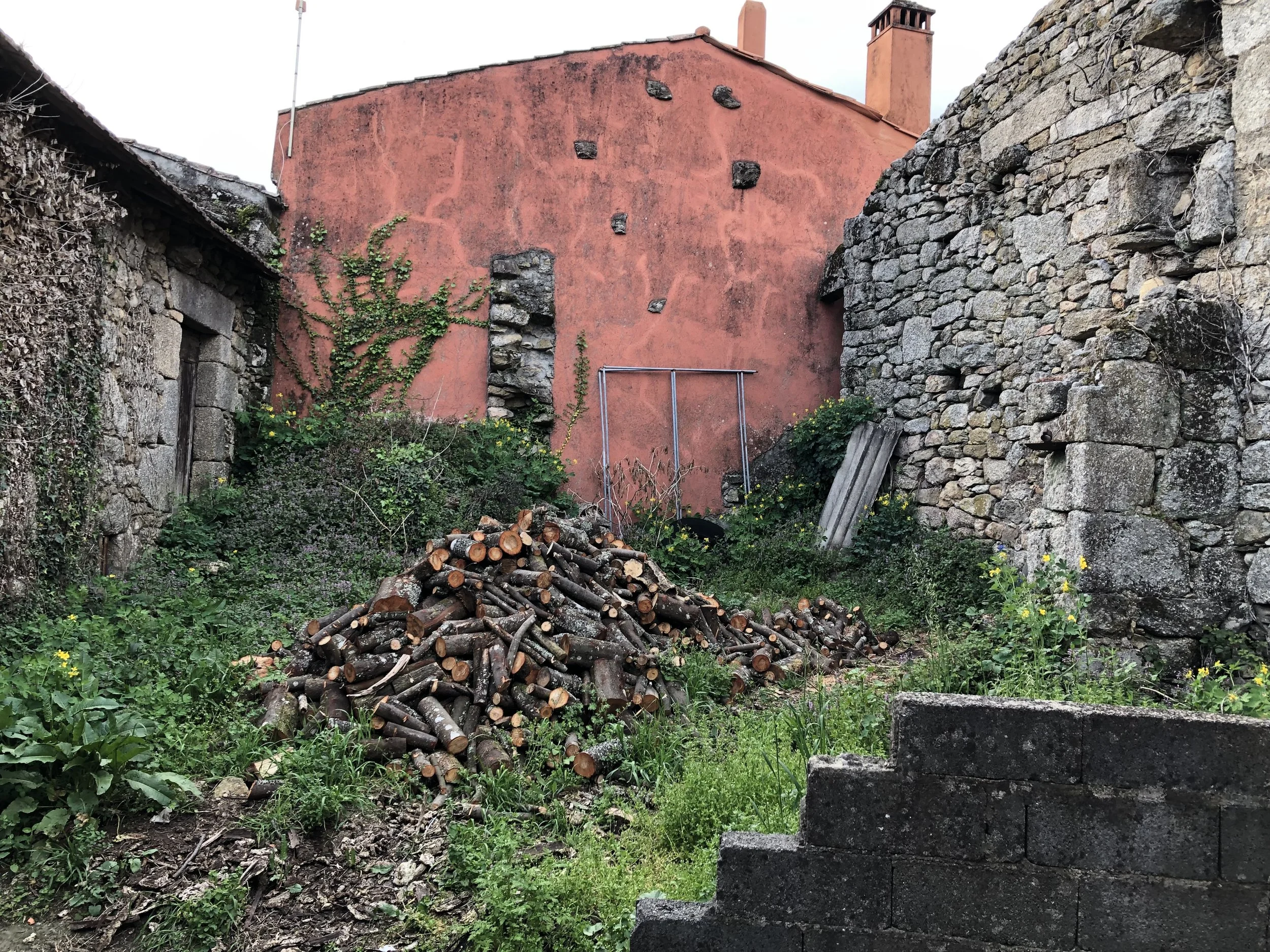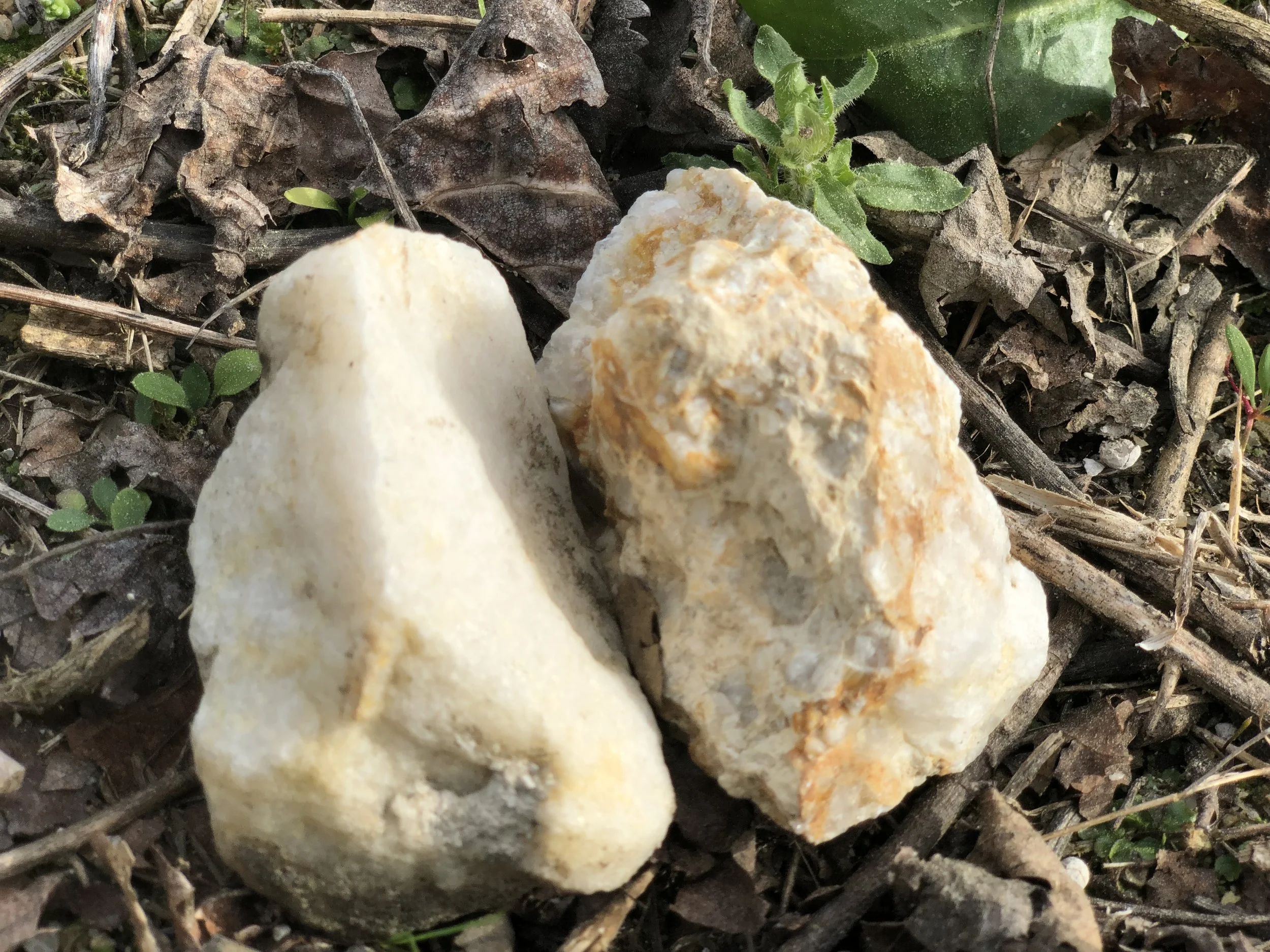Luis Rodriguez: A Rare Gem in Ribeiro
Luis Rodriguez (affectionally referred to as ‘LuRod’) resides in the quaint, quiet village of Arnoia in the Ribeiro DO of Spain (within the greater region of Galicia)— just about an hour east of the southern most part of Rias Baixas (O Rosal) and a northerly neighbor to Portugal. The Ribeiro DO itself only sees about 6,000 hectares under vine. About 2,000 growers (yes) share this land. Many have a mere few rows. Luis Rodriguez holds nearly 200 parcels (yes). This amounts to about… 6 hectares in total. Most of his grapes are grown just steps from his cellar and home in Arnoia, from which he makes Os Pasas, Eidos Ermos, A Torno dos Pasas, and the Escolmas. Only A Teixa comes from outside in a neighboring town - Ribadavia.
Luis is a lovely man. After a civilized beer at the local cafe, we had a very long and informative walk through the vineyards. It was clear after spending more time in Arnoia specifically, that this area is facing a challenging moment. There are only about 1,000 people who live here. Only a handful of years ago, this was nearly 2,500. The young people have moved away. The economy feels depressed. Labor is near impossible to find. It seemed like nearly all (not some) of the people we passed on the streets were quite elderly. There are only 7 or 8 active wineries here today. The rest of the the growers (often just people gardening their backyard rows) sell it to the local coop. It is rare that people like Luis exist who want to take over farming these parcels and preserve the history of this area’s indigenous varieties — the kind of grapes that he farmed alongside his grandfather when he was young.
Walking up and down these tiny hobbit hills, one plot after another presented itself with it own personality - each a dozen rows or so. Some were his. Others were not. It was clear by the greenery and life which were some of his. He took us through his cellar (pics below), and finally a tasting.
The new releases are simply lovely. I suppose I just love his palate. He is seeking to achieve something in these wines that truly differentiate one from the next, giving you a deeper sense of this area’s full potential and range of grapes. It is an area that sees both a Maritime and Med effect, and while it gets very warm, the acidities stay quite fresh with well-defined fruit and moderate to low alcohol. We won’t be getting much, but they are easy to love. You will have some regular supporters familiar LR’s wines. But try to encourage some new fans. This is an opportunity to taste a region through the lens of an aesthete, building beauty one tiny unique cuvee at a time.
Here is what we have for new releases:
2019 Os Pasas
‘Os Pasas’ really just means ‘of the area.’ It’s like saying ‘Os Denver’ or ‘Os Vail’. Pasas itself just refers to this particular region - not really a thing itself. Therefore, these are grapes of Arnoia parcels. Always a field blend of sorts with Treixadura, Lado, Albarino, and Torrontes. Lado is gaining in plantings here in Ribeiro due to climate change - offers high acid to a blend. This wine is snappy and fresh. Nuanced notes of green melon and white peach skin at the rim along with a hint of wet river stones and springtime white blossoms. All stainless steel for one year, then another in the bottle. Zippity do dah.
2018 A Teixa
Never fails to offer a nice contrast to the Os Pasas, the A Teixa comes from a 1.3 ha parcel next door in Ribadavia, an ancient old town where the streets and building reflect the granite of the area. The blend is largely Treixadura (95%) with a touch of Godello and Albarino to round it out. Aged in two Austrian (Stockinger-like) barrels for a year, then aged two more in bottle, this wine is more expansive on the palate with yellow apple, notes of umami (parmesan) and graphite. It is pillowy yet playful with a tinge of lemon curd on the finish. This has always been my go to when I am in the mood for something like Burgundy with a bit more flare and mystery.
2017 Escolma Branco
We rarely work with these, but we had an opportunity to snag a little this year. He doesn’t always make it unless the timing and the quality of grapes are right. It is a selection of his finest grapes (Escolma means selection in Gallego, the local dialect) - here mostly Treixadura. Aged one year in 500-600L neutral barrels, then in bottle for a few years. This wine exhibits more tertiary character up from - white button mushroom and delicate notes of honey and almost canned caramel apple. It’s decadent without losing its center. An exotic wine with underlying spice and strength.
2019 Eidos Ermos
This wine never fails to win my heart. A collection of misfits, these are the grapes that come together when they haven’t made the cut for the top cuvees. A blend of Brancellao, Souson, Caiño and Ferrol. Somehow, they just work to make an energetic, fresh, fantastic blend once they collaborate. Black tea, twizzler, blackberries, and a mist of shy peppery rotundone on the nose, this wine has beam-like acidity on the palate. It manages to offer up juicy fruit that steers away from the overtly austere, yet it finishes clean and dry. It is such a perfect wine for… anytime, but especially in spring and summertime with a chill.
2018 A Torno dos Pasas
Similar grapes but a more particular selection. Often lead by Brancellao, this wine is fully destemmed, fermented for a mere 15 days, then pressed off skins to live in 300L barrels (neutral) for about a year. The rest of time it resolves itself in bottle. Darker fruits, macerated strawberry, black cherry, and green tobacco. A wild scent yet fully integrated in many ways. Warm and spicy - fuller on the palate that Eidos. Acid is still singing.
2017 Escolma Tinto
In my humble opinion, the star of the show. This wine had us all shouting out a myriad of descriptors, it was so complex. One of the travelers said it reminded him of Bombay dinner time. The first hit is mint, but this quickly gives way to Balsam fir, wet leaves, all spice, cardamom pods, juniper, and a mash of mountain berry fruit both red and black. There was fully realized ripened fruit, but the acid so present that it was lighter on its feet than, say, Bordeaux. Yet, the underlying graphite minerality that carried it was reminiscent of good left bank at moments. It truly is its own thing though - its own animal. So I hate to make comparisons like that. All these wines are unbelievably Ribeiro. A nod to the ocean, the rivers, the hills, the humidity, the sunlight, the granite and quartz. They are all those things in a bottle. You can only taste through them to know what I mean! ;)





